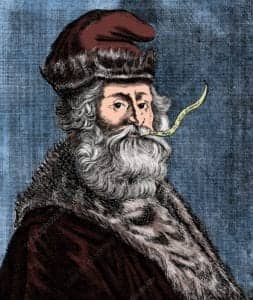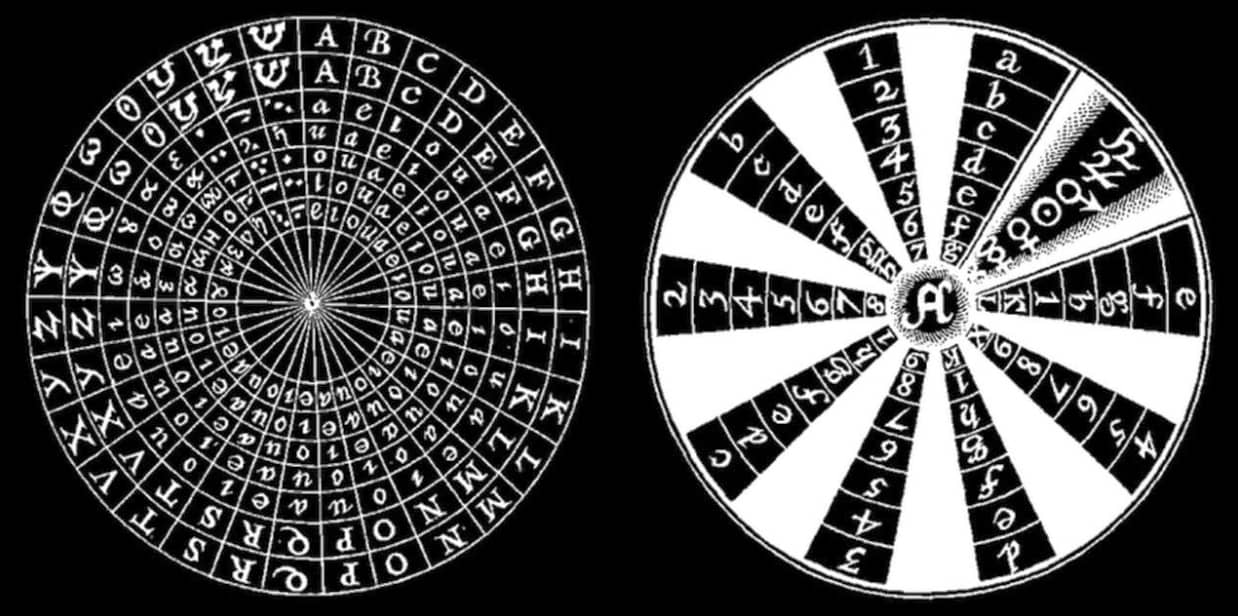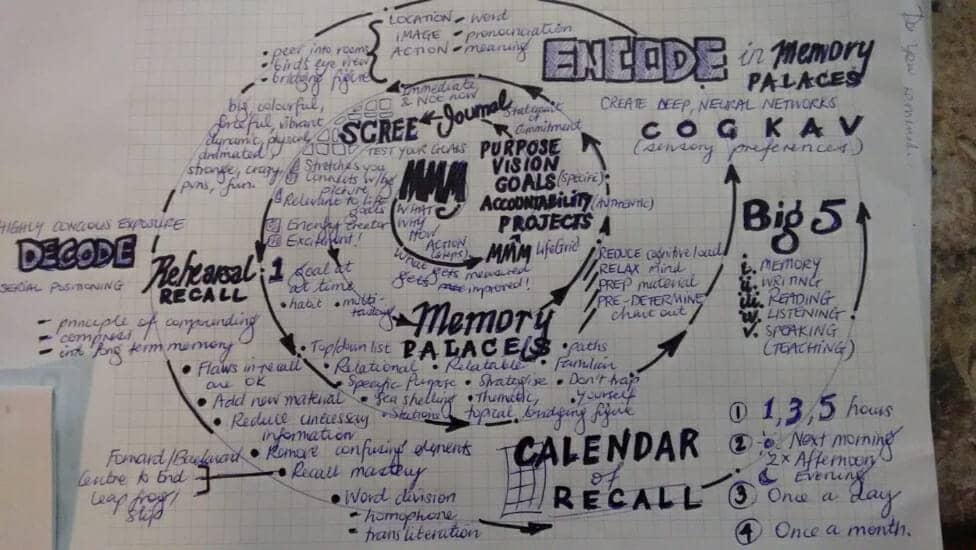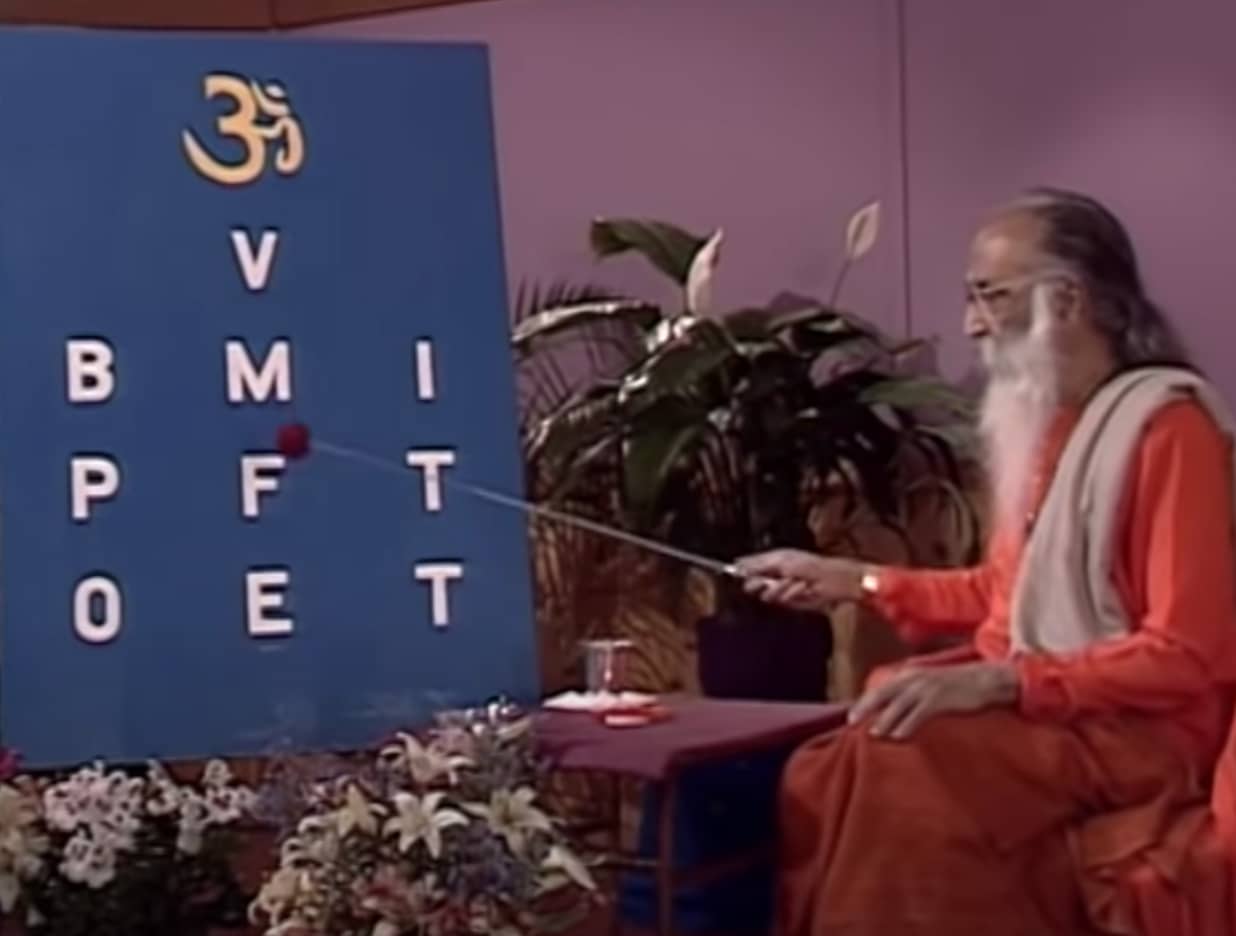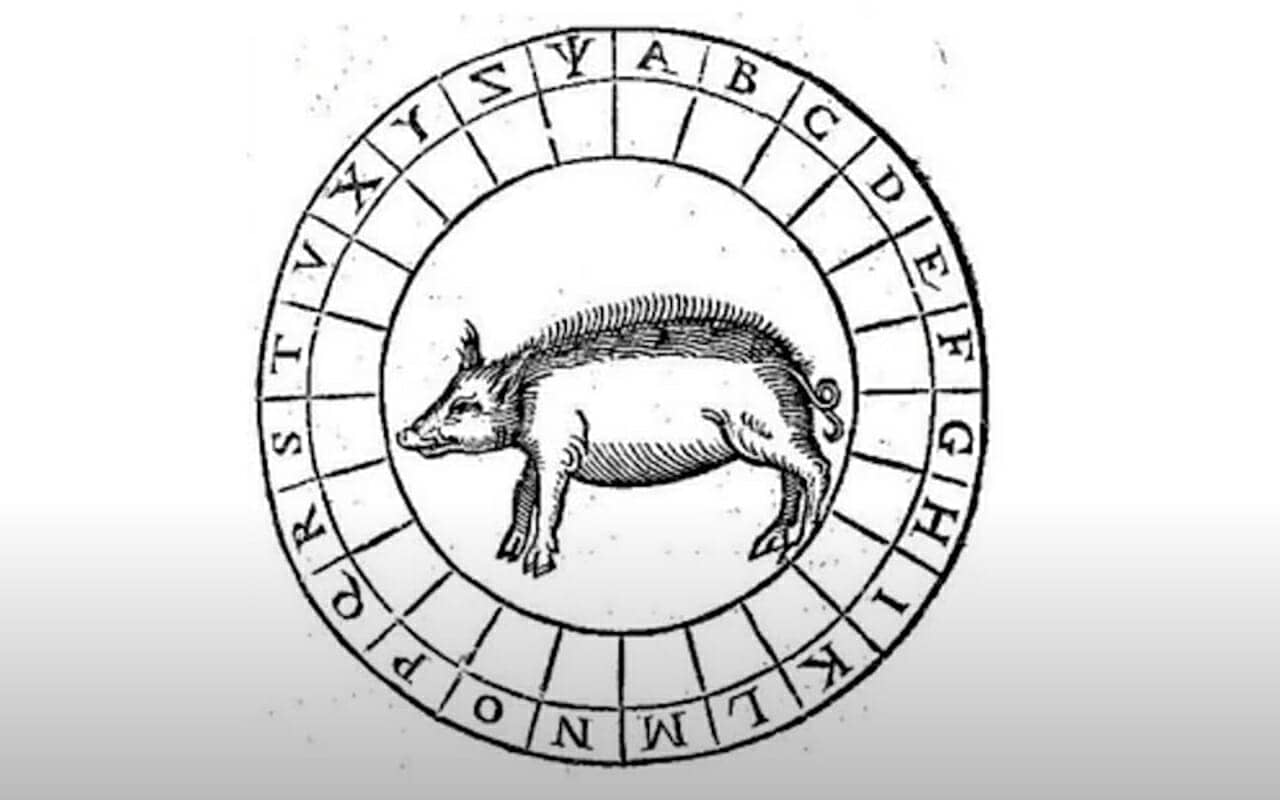 Ramon Llull created a “mental martial art” that helps people remember better while also thinking at a higher level.
Ramon Llull created a “mental martial art” that helps people remember better while also thinking at a higher level.
To understand Llull’s technique as fully as possible, let me introduce you to a few important details about this philosopher and his life.
Then let’s focus on the Memory Wheel technique itself. That way, you’ll understand why Llull spent a great deal of history renowned for his belief that everything could be understood and remembered.
Everything?
In the Medieval and Renaissance period, some people did think this was possible. That said, Llull lived at a time where authors used exaggerated rhetoric. It’s not necessarily the case that he meant you could understand and remember everything in the universe.
More likely, he assumed that you would use the critical thinking capacities enabled by the Memory Wheel technique to focus solely on information that matters.
Logic would dictate that we do so, and Llull was all about logic.
Who Was Ramon Llull? A Brief Overview
Ramon Llull was born in Palma, Spain in the year, 1232.
In this environment, Llull was exposed to a diverse range of cultures and ideas. Mixing Christianity with the Islamic and Jewish traditions, Llull developed a unique perspective, one that helped shape the philosophical endeavours of Giordano Bruno, John Dee, Francis Bacon, Gottfried Wilhelm Leibniz and many others.
In books like Ramon Llull: From the Ars Magna to Artificial Intelligence, the authors credit Llull as a very early originator of modern computing. Mental computation is essentially what we do when using memory techniques.
I don’t think Llull came up with these ideas out of nowhere. He undoubtedly took much inspiration from Aristotle’s comments on using the alphabet in De Memoria. I call Aristotle’s understanding of using the alphabet as a mnemonic device a “nuclear alphabet.”
I do this because Aristotle himself thought the alphabet was explosive, especially when we weave it together with well-formed mnemonic images and Memory Palaces.
But Llull was not just focused on memory improvement. He believed that developing certain mental architectures could help people communicate better, resolve conflicts and comprehend and remember information much better.
At least, that’s a charitable reading of Llull’s intention.
The Dark Side of Ramon Llull?
In Mystics in Spite of Themselves: Four Saints and the Worlds They Didn’t Leave, Robert Herrera agrees that Llull’s Ars Combinatoria is an ancient ancestor of our modern computers.
But he sees a less generous character, someone at intellectual war with Averroism. In brief terms, this thought system was something between Aristotelianism and atheism. Although it’s not clear if this battle of wits actually happened, legend suggests that Llull was so insistent about his mystical beliefs that he was nearly stoned to death after trying to convert the people of Mallorca.
As Herrera puts it:
Llull was a person unable to hold his missionary enthusiasm in check. He was compelled to preach, expounding and teaching the poetic, scientific, and literary work subordinated to what he called the Art. This art included memory techniques and he sincerely believed his knowledge of it was given to him by God to restore humanity to a perfect state.
Memory Wheels & How To Use Them To Remember Things
Memory wheels combine the alphabet with imaginary circles in the mind. Each letter represents a word or concept.
This basic idea helps you remember simple concepts, like the meaning of goodness. You call the letter to mind and “unfold” the larger concepts, perhaps by referring to a formal Memory Palace.
As the user revolves the alphabet in the mind, they can systemically reflect on various attribute of Gods. According to Llull, by doing this, the user participates in acts of creation that heal the world. This added feature makes sense because along with preaching the gospel often comes counseling.
But there’s another reason Llull promoted Memory Wheels for spreading his interpretation of Christianity. In order to avoid carrying books around the world like Matteo Ricci did, using a Memory Wheel helped the evangelist refer to the key concepts mentally.
Books were heavy and difficult to transport during Llull’s time. But since people back then were as skeptical as they are now, it was important that the preacher deliver reasonable arguments based on deep familiarity with doctrine.
The Memory Wheel works because like most ancient memory techniques, the geometrical structure gives you a frame of reference. It’s like thinking about a painting, and in that painting are some words. When you refer to the painting, it’s easier to recall the word compared to trying to dig it out of the void of your mind.
The Ultimate Student of the Memory Wheel
Llull was fairly successful at having his students evangelize using Memory Wheels. One student in particular thought about the techniques perhaps deeper than anyone else.
Not only that, but Giordano Bruno wrote commentaries on Llull’s philosophy and how he used the Memory Wheels for memory and for critical thinking.
Bruno also develops from Llull’s Ars Combinatoria a kind of “self help” program in a book called shows in his On the Shadows of the Ideas. It is one of the most important philosophy books available.
Here are the main ways to use a Memory Wheel:
One: As A Memory Palace
Normally, a Memory Palace is a mental copy of a building. You use this imagined structure like a container for associations. The user combines these associations with target information using a process contemporary scientists call elaborative rehearsal. (If you’re not interested in the science, feel free to skip to these elaborative encoding exercises.)
As a simple example, have a look at either of these Memory Disks:
If you want to remember a word that starts with A, you would place that at approximately the 12 o’clock position. You could use the image of someone named Adam throwing an Apple at a stallion to remember the word Apollonian, for example.
Then you move on to the B, the C, and so on. You could readily memorize 26 words this way, purely by referring to these letters arranged in space on your imaginary Memory Disk.
For a more contemporary version of something similar to Memory Wheels, you can use mind mapping, which also reduces larger ideas to simple keywords much of the time. One of my students shared her Memory Palace from completing the Magnetic Memory Method Masterclass. As you can see, it looks a lot like a Memory Wheel:
In many ways, this student has combined mind mapping with concept mapping. That leads to an additional impact when it comes to putting the memory techniques into action. It also gives you yet another layer of critical thinking strategy that leads to faster and more substantial learning outcomes.
Two: As A Recall Device
The natural complement to encoding images using a Memory Wheel is then referring to the same structure to recall the information. I believe this was often done to counsel people.
In other traditions, such as Advaita Vedanta, you see something similar. Except in this case, it’s not a wheel, but the BMI chart:
The teacher clearly doesn’t need the chart himself, but the wheel structure is actually irrelevant. The teacher can still use the letters to save space. As he unpacks them, he help students start to learn the meaning of the individual letters.
As he continues to refer to the letters, he’s also giving the students some natural spaced repetition. In this video I discuss Memory Wheels and how they work in combination with spaced repetition with more examples:
Three: As An Association Elaborator & Generator
In On the Composition of Images, Bruno teaches how to rapidly generate the perfect associations for images.
Have a look at this Memory Wheel from Giordano Bruno, courtesy of Martin Faulks:
As this example demonstrates, if you have to memorize a word that starts with a P, a pig might be memorable. But you can make it much more memorable yet by adding various ridiculous features.
Instead of racking your brain for what those features could be, you simply think of the Memory Wheel surrounding the pig and A suggests that it is angry. B suggests that the pig is bouncing, C that it is cozying up to the next mnemonic image in your Memory Palace and so on.
As an alternative, you can use your Memory Wheel to “store” possible images. You just spend some time coming up with them and whenever you need them, think to your wheel and apply them to the information you want to memorize.
Four: Critical Thinking
A lesser known use of the memory wheel is critical thinking. Bruno suggests based on Llull’s original teaching in Ars Brevis that you simply string the big questions up on a wheel:
- Who
- What
- Where
- When
- Why
- How
Although admittedly simple, this device works incredibly well. It’s both a critical thinking exercise and asking questions is a tactic for developing memories faster. It will also stimulate your reading comprehension.
The best part is that you can remember to use this kind of Memory Wheel why using other note taking techniques, such as:
Combining these techniques is a fantastic way to smash through any learning plateaus you might face along your learning journey.
Are Memory Wheels For You?
Obviously, this technique is not a magic bullet. But it is an antidote to freezing and failing to take action.
The Memory Wheel is another tool in your toolbox you can draw upon to keep yourself moving.
Not only are you getting the benefit of thinking deeply about how to solve your problems and avoiding issues created by gut responses. You’re also getting memory exercise. Plus, you’re exercising and enhancing your powers of cognition. As you experiment and explore, you may even find yourself fulfilling unmet cognitive needs.
As you’ve seen, Memory Wheels can also serve as powerful mnemonic tools if you develop them for that purpose. By associating concepts with visual representations on your Memory Wheels, your mind can create stronger mental connections, enhancing memory retention and recall.
Bruno speaks of associating the letters with powerful mnemonic associations, such as A for Athena, B for Bacchus, C for Cerberus. He even has the Demogorgon involved as you can see in this video:
Overall, the Memory Wheel structure stimulates creative thinking. It encourages and enables you to explore relationships and connections between concepts.
Develop Memory Wheels of your own and you will soon find yourself uncovering new perspectives, generating novel ideas, and fostering innovative insights.
And if you want yet another technique, I invite you to sign up for my free course on developing and using Memory Palaces:
These are more streamlined for me than Memory Wheels. But I wouldn’t pick one or the other.
I would recommend exploring and experimenting with both.
Bring our curiosity, patience and consistency to the practice and soon you will master the usage of many memory techniques.
It’s the mission of this blog to cover them all. So far so good, and I remember many things thanks to tools like these, and having Llull’s tireless promotional efforts in the background.
Even if he was as belligerent as Herrera says, it is true that humans started performing mental computations that led to math systems like algebra and calculus.
Many computer experts agree that we wouldn’t have computers today without him.
Thank you Ramon Llull!
Related Posts
- Stoic Secrets For Using Memory Techniques With Language Learning
Christopher Huff shares his Stoic secrets for using memory techniques when learning a language. You'll…
- Memory Athlete Braden Adams On The Benefits Of Memory Competition
Braden Adams is one of the most impressive memory athletes of recent times. Learn to…
- The German Professor Who Defends Memory Techniques for Language Learning
This professor defends memorization techniques for learning foreign languages and has the science to prove…

